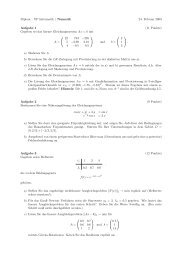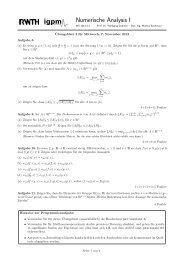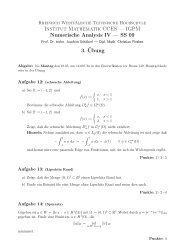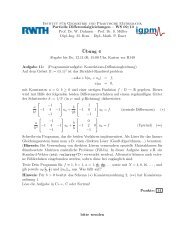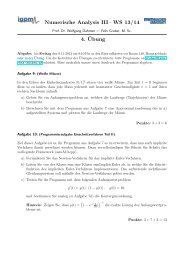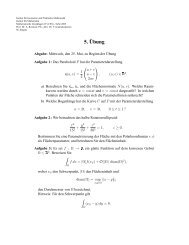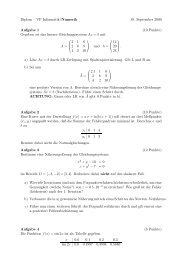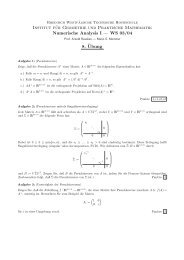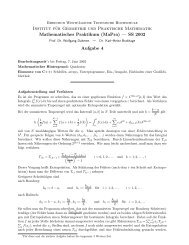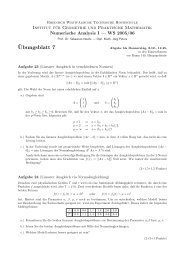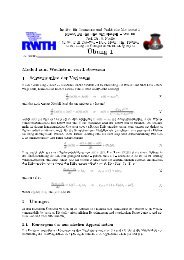preconditioners for linearized discrete compressible euler equations
preconditioners for linearized discrete compressible euler equations
preconditioners for linearized discrete compressible euler equations
Create successful ePaper yourself
Turn your PDF publications into a flip-book with our unique Google optimized e-Paper software.
Bernhard Pollul<br />
the PBSPAI(0) preconditioner are much higher (note, however, the high parallelization<br />
potential). Typical values (depending on P(A)) in our experiments are 20-50 matvecs.<br />
In the application of this preconditioner no 4 × 4 subproblems have to be solved and due<br />
to this the arithmetic work is somewhat less as <strong>for</strong> the PBILU(0) preconditioner. We<br />
typically need 1.2-1.5 matvecs per application of the PBSPAI(0) preconditioner. Summarizing,<br />
if we only consider the costs per application of the <strong>preconditioners</strong> than the<br />
PBILU(0) method is about twice as expensive as the PBGS method and the PBSPAI(0)<br />
preconditioner is slightly less expensive than the PBILU(0) method.<br />
4.1 Test problem 1: Stationary 2D Euler with constant solution<br />
We consider the discretized stationary Euler <strong>equations</strong> described in test problem 1<br />
with mesh size h = 0.02. We vary the Mach number in x-direction, which is denoted<br />
by M x : 0.05 ≤ M x ≤ 1.25. For the Mach number in y-direction, denoted by M y , we<br />
take M y = 3M 2 x. The linear system in (3) is solved with the preconditioned BiCGSTAB<br />
method, with starting vector zero. The iteration is stopped if the relative residual (2-<br />
norm) is below 1E-6. Results are presented in Figure 3. As a result of the downwind<br />
numbering the upper block-diagonal part of the Jacobian is zero in the supersonic case<br />
(M x > 1) and thus both the PBILU(0) method and PBGS are exact solvers. The PB-<br />
SPAI(0) preconditioner does not have this property, due to the fact that M is a sparse<br />
Figure 3: Test problem 1, iteration count<br />
10



